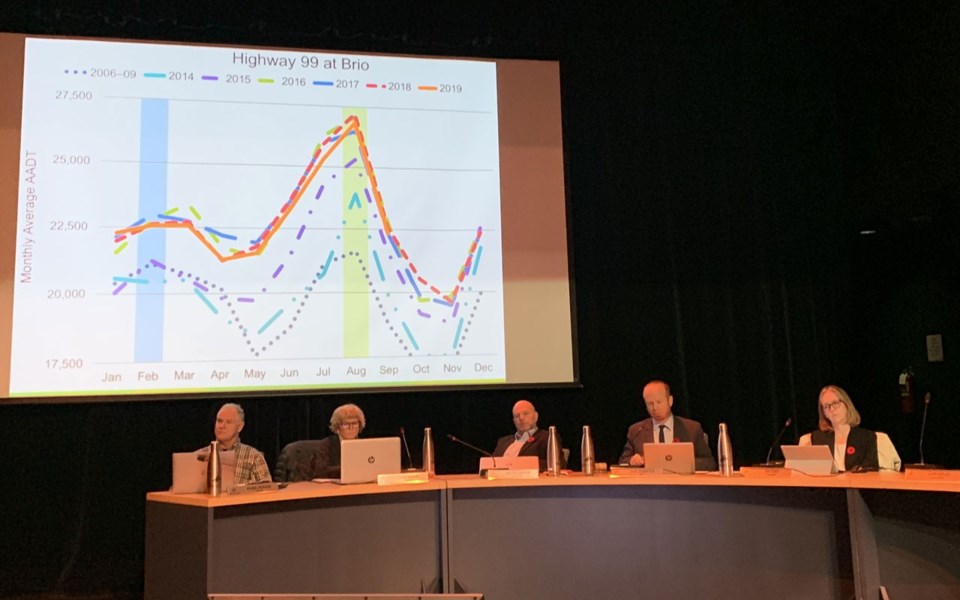In its ongoing efforts to curb passenger vehicle emissions, the Resort Municipality of Whistler (RMOW) will launch an initiative next year offering free transit to local high-school students—funded by an increase in the price of monthly parking passes for Day Lots 1 to 3.
The pilot project, which was presented as part of an update to the Whistler Transportation Action Plan at the Tuesday, Nov. 5 council meeting, is aimed at reducing highway congestion and greenhouse gas emissions by cutting down on "parent chauffeur" trips within Whistler.
The original goal was to test the program with Grade 8 and 9 students, before it was recommended by the Transportation Advisory Group (TAG) and the Day Lots Operating Committee to offer it to approximately 500 local high-school students at Whistler Secondary School and Whistler Waldorf School.
Although RMOW transportation demand coordinator Emma DalSanto said BC Transit expressed concern about adding so much ridership, because School District 48 will continue to offer its own bussing, "we feel the current transit system we have will be able to accommodate our high school students."
Ridership patterns and vehicle capacity will be monitored as part of the project, which is being targeted for launch in early January.
The project is estimated to cost $61,000, and will be funded by the added revenue from raising the price of a monthly parking pass for Day Lots 1 to 3 from $50 to $60, aligning with a legal agreement between the RMOW and Whistler Blackcomb that says any day lot revenue beyond operations and maintenance must be spent on transportation initiatives. The price adjustment goes into effect on Dec. 1.
The price hike is also an effort by the RMOW to encourage further transit use and increase the availability of parking spaces during peak times.
"The reason for [increasing the pass price] is to reduce, if possible, the purchase of the monthly pass and the use of the monthly pass," DalSanto said.
According to the report, monthly parking pass sales have seen a rapid increase. This past winter, more than 700 passes were sold in Day Lots 1 to 3 for just 800 available spots.
"Once you have a pass, you want to get your money's worth and you will keep using it until your pass runs out, so it's actually doing the opposite of what we like in the parking lots—it's driving more people to drive," explained DalSanto.
Although she was glad to see the price of a monthly parking pass jump ahead of the $50 monthly bus pass, Councillor Jen Ford urged TAG to find a way to make the $270 six-month and $510 12-month transit passes more affordable.
"People don't buy a six-month pass because they don't know if they will be here in six months. It's a big outlay of cash," she said. "The numbers don't quite make sense to buy a six-month or 12-month pass, so I challenge us to find ways to bring those passes down so it is cheaper than driving your single-occupancy vehicle to town."
The RMOW has also set a maximum target of 90-per-cent occupancy in the day lots; that number regularly goes up to 100 per cent on peak days "and many other days as well," DalSanto said.
Parking got even tighter after the removal, earlier this year, of 120 spots from Day Lots 4 and 5 that was mandated by Transport Canada for helicopter operations at the Whistler Health Care Centre's helipad.
"Had we not done the work we had done, we would have been in a much worse place this past summer," DalSanto said.
The Creekside parkade, by comparison, continues to be underutilized in the summer.
Tuesday's presentation also looked at traffic levels on Highway 99, and found that, despite an estimated six-per-cent increase last year in traffic arriving in Function Junction, that total traffic measured within Whistler at the Brio counter has stayed relatively steady dating back to 2016.
"This is a key and important point showing that our Transportation Action Plan is working," said DalSanto, highlighting a six-per-cent increase in summer weekday ridership.




